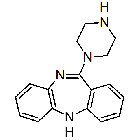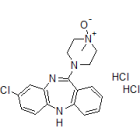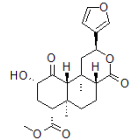DREADD agonist 21 (Compound 21) dihydrochloride (water soluble)
Product overview
| Name | DREADD agonist 21 (Compound 21) dihydrochloride (water soluble) |
| Alternative names | C21 |
| Purity | >98% |
| Customer comments | We used Compound 21 (DREADD agonist 21) dihydrochloride (water soluble) (1mg/kg) and CNO in rats (1mg/kg) and we found a great effect on cells infected with dreadds-Gs. Both products are really easy to dissolve in saline! Verified customer, Universite de Bordeaux Great Product!, Product was delivered promptly. Very easy to work with. No problems keeping it in solution. Verified customer, Florida Atlantic University |
| Description | Effective agonist for muscarinic-based DREADDs in vitro and in vivo. Non-CNO chemogenetic actuator. Brain penetrant. Water soluble. |
Images
Biological Data
| Biological description | Overview DREADD agonist 21 (Compound 21) hydrochloride is a water soluble salt of DREADD agonist 21 (Compound 21) which represents an alternative chemogenetic actuator for muscarinic -based DREADDs and an alternative to CNO for in vivo studies in which metabolic conversion of CNO to clozapine is an issue.
DREADD agonist 21 from Hello Bio has recently been cited in a pharmacokinetic profile of the compound in mice by Jendryka et al (2019) which suggests that DREADD agonist 21 shows superior brain penetration and long-lasting presence. They suggest that the compound is a suitable DREADD agonist (0.4-1 mg/kg) which is effective at latest 15 min after i.p injection, but requires between-subject controls for unspecific effects. Figure: In vivo pharmacokinetic profile of DREADD agonist 21 (Cmpd-21). DREADD agonist 21 was from Hello Bio. (j–l): Concentration (nM) of Cmpd-21 (blue) at 15, 30 and 60 min after i.p. injection of 3.0 mg/kg Cmpd-21 in (j) plasma, (k) CSF, and (l) cortical brain tissue. Reproduced from Jendryka et al Sci Rep. 2019;9(1):4522
Bonavenutra (2018) suggest that the compound exhibits lower in vivo DREADD potency than clozapine and is not efficient in nonhuman primate (NH) applications.
Bonavenutra (2018) reported DREADD ligands while efficacious in certain applications may not display sufficient potency or selectivity in others.
Care should therefore be taken with in vivo dosing of DREADD agonist 21 to ensure the free concentration of the compound remains in a range that activates muscarinic DREADDs but is sufficiently low to avoid antagonism at wild type GPCRs.
|
Solubility & Handling
| Solubility overview | Soluble in water (100mM). Always store solutions at -20°C. |
| Storage instructions | -20°C (desiccate) |
| Handling | Storage of solid
Storage of solutions
Storage of solutions at room temperature
|
| Shipping Conditions | Stable for ambient temperature shipping. Follow storage instructions on receipt. |
| Important | This product is for RESEARCH USE ONLY and is not intended for therapeutic or diagnostic use. Not for human or veterinary use |
Chemical Data
| Purity | >98% |
| Chemical name | 11-(1-Piperazinyl)-5H-dibenzo[b,e][1,4]diazepine dihydrochloride |
| Molecular Weight | 352.29 |
| Chemical structure | 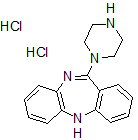 |
| Molecular Formula | C17H18N4.2HCl |
| CAS Number | 2250025-92-2 |
| SMILES | C1CN(CCN1)C2=NC3=CC=CC=C3NC4=CC=CC=C42.Cl.Cl |
| Source | Synthetic |
| InChi | InChI=1S/C17H18N4.2ClH/c1-2-6-14-13(5-1)17(21-11-9-18-10-12-21)20-16-8-4-3-7-15(16)19-14;;/h1-8,18-19H,9-12H2;2*1H |
| InChiKey | SETCOPAXYQJWKI-UHFFFAOYSA-N |
| Appearance | Yellow solid |
References for DREADD agonist 21 (Compound 21) dihydrochloride (water soluble)
-
Optogenetic approaches for dissecting neuromodulation and GPCR signaling in neural circuits.
Spangler and Bruchas (2017) Curr Opin Pharmacol 32(4) : 56-70. -
Clozapine N-Oxide Administration Produces Behavioral Effects in Long-Evans Rats: Implications for Designing DREADD Experiments.
MacLaren et al (2016) eNeuro 3(5) : 0219-16 -
The first structure-activity relationship studies for designer receptors exclusively activated by designer drugs.
Chen et al (2015) ACS Chem Neurosci 6(3) : 476-84 -
New non-CNO actuators for DREADDs
Roth Bl (2015) Blog : N/A
-
Improvement of sensory deficits in Fragile X mice by increasing cortical interneuron activity after the critical period
Portera-Cailliau et al (2022) Biorxiv : https://doi.org/10.1101/2022.05.17.492368 -
Chemogenetic dissection of prefrontal signalling underlying attention and impulsivity
van der Veen et al (2022) Universität Ulm : Thesis -
Chemogenetic activation of midline thalamic nuclei fails to ameliorate memory deficits in two mouse models of Alzheimer's disease
T Craig et al (2022) bioRxiv https://doi.org/10.1101/2021.06.30.450500 : doi -
Microglia modulate blood flow, neurovascular coupling, and hypoperfusion via purinergic actions
Csaszar et al (2022) J Exp Med 219 : 3PubMedID: 35201268 -
Activation of the Lateral Habenula-Ventral Tegmental Area Neural Circuit Contributes to Postoperative Cognitive Dysfunction in Mice
Xin J et al (2022) Adv Sci (Weinh) 9(22) : e2202228PubMedID: 35616407






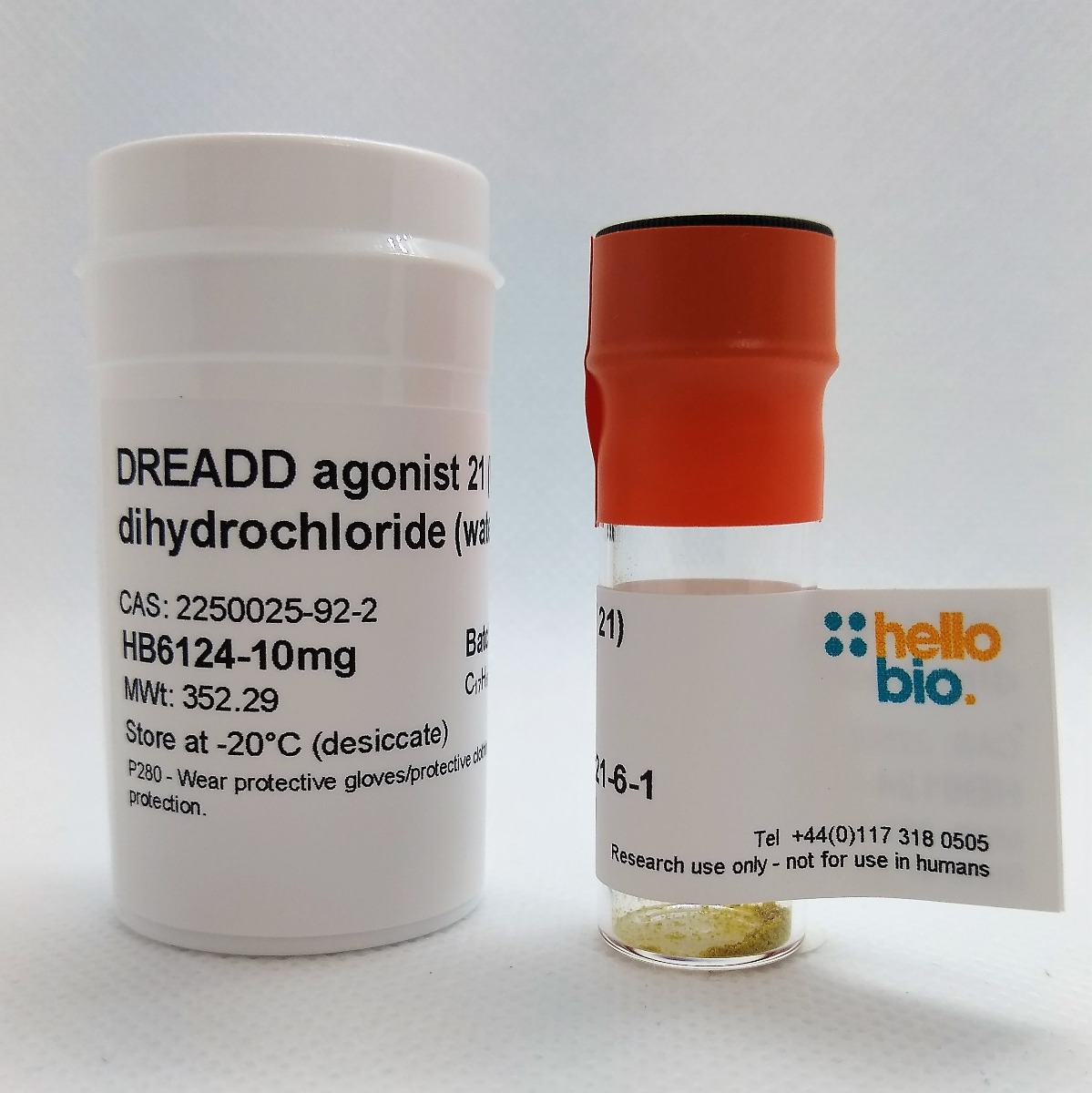
 Understanding purity and quality - a guide for life scientists
Understanding purity and quality - a guide for life scientists